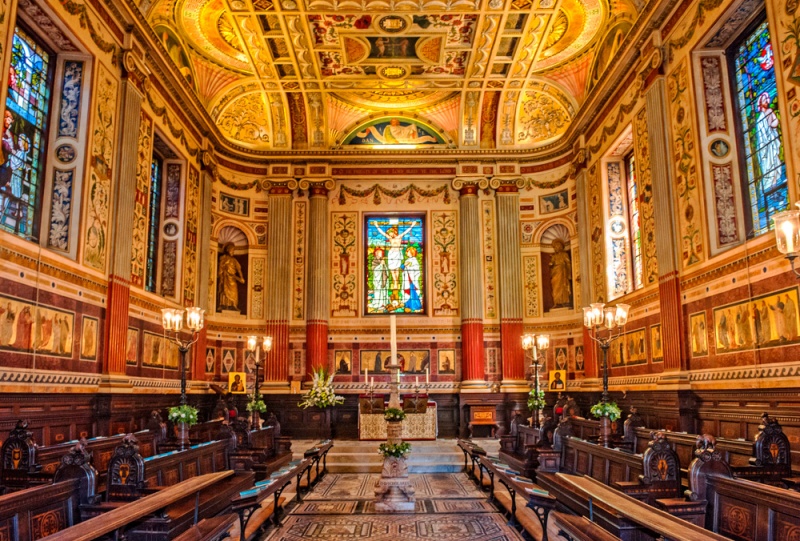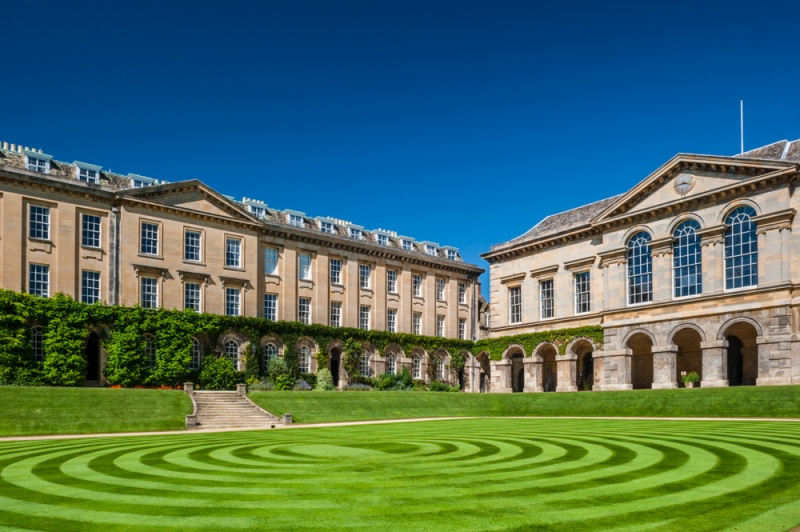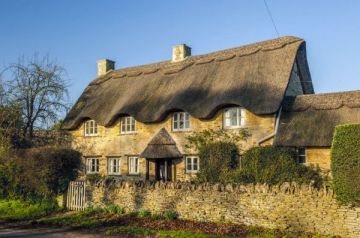
A college for Benedictine monks existed on this site since 1283. The college was founded by the Abbey of St Peter in Gloucester, which became Gloucester Cathedral after the Reformation. Not surprisingly it was named Gloucester College.
The 13th-century college provided a residence for 13 monks from Gloucester, who shared accommodation. Other abbeys saw the advantage of housing their monks together and asked permission to share the space. As a result, several cottages were built to house the monks. By the end of the medieval period fully 15 monasteries had monks residing at Gloucester College.
Several of these medieval cottages still survive as part of the present Worcester College. The continued existence of these cottages was the result of a lack of funds, not a strong sense of the need to preserve architectural heritage. These medieval residences for monks are located on the south side of the main quadrangle, in Pump Quad, and by Staircases I and II.
Gloucester College was dissolved at the Reformation and the medieval buildings were granted to Robert King, the first Bishop of Oxford. King probably used the old college buildings as his Bishop's palace until his new palace on St Aldates was completed. In 1560 the site was purchased by Sir Thomas White, a wealthy tailor and former Lord Mayor of London, who also founded St John's College. White refounded the college as Gloucester Hall.
In 1714 Gloucester Hall became Worcester College thanks to the generosity of Sir Thomas Cookes, a landowner in Worcestershire. As a result of Cookes' bequest, the majority of Worcester's buildings were built in the Georgian style.

The sumptuous Library was built in 1736 thanks to another benefactor, Sir George Clarke, whose collection of original drawings by architect Inigo Jones is unrivalled anywhere. Clarke called on Nicholas Hawksmoor, a personal friend, to design the Library, Hall, and Chapel. Clarke also left his collection of manuscripts to the Library.
Another notable architect, Sir James Wyatt, was responsible for the interiors of the Hall and Chapel, which were finished around 1770. The Chapel was redecorated in sumptuous High Church style by William Burges in 1864. Henry Keene completed the Provost's Lodging in 1864. It is doubtful if any other Oxford college has had contributions from 4 famous architects like Worcester.
The Chapel is perhaps the highlight of a visit to Worcester College. The interior is simply stunning, a superb example of 18th-century architecture. Construction took over 70 years, from 1720-91, due to lack of money, but the result was worth waiting for. The astonishing dome is Wyatt's design, as are the pilaster strips and delicate plasterwork foliage.
Wyatt's refined Georgian style is almost overwhelmed by William Burges' lush High Victorian decoration. Burges wanted to make the chapel resemble an early basilica, and used richly coloured materials such as tile, alabaster, wood glass, mosaics, stained glass, and frescos, to create a sumptuous, sensory design.
Every decoration is full of religious symbolism, but Burges was not without humour; look for the painted dodo and kiwi illustrating the Biblical 'fowls of the air'. The most controversial contribution made by Burges was four gilded statues of the Evangelists, one in each corner of the chapel. These were labelled 'idolatrous' and 'abominations' by traditional Anglicans, who saw them as promoting a Catholic form of worship.
One of the major attractions for visitors to Worcester College is the extensive (28 acres) gardens, which are every bit as popular as the historic architecture. You can wander along quiet waterways and woodland, and never imagine that you ate in the heart of the city.
The college is usually open 2-5 pm, free entry. I have visited on several occasions, and I always enjoy myself. Worcester College is one of my favourite Oxford colleges and an absolute delight to explore.
About Worcester College
Address: Walton Street,
Oxford,
Oxfordshire,
England, OX1 2HB
Attraction Type: Historic Building - College
Location: Located at the junction of Beaumont Street, Walton Street and Worcester Streets, a few minutes walk from the Ashmolean Museum.
Website: Worcester College
Location
map
OS: SP509064
Photo Credit: David Ross and Britain Express
HERITAGE
 We've 'tagged' this attraction information to help you find related historic attractions and learn more about major time periods mentioned.
We've 'tagged' this attraction information to help you find related historic attractions and learn more about major time periods mentioned.
Historic Time Periods:
Find other attractions tagged with:
Decorated (Architecture) - James Wyatt (Person) - Medieval (Time Period) - Reformation (Historical Reference) -
NEARBY HISTORIC ATTRACTIONS
Heritage Rated from 1- 5 (low to exceptional) on historic interest
Ashmolean Museum - 0.2 miles (Museum) ![]()
Martyr's Memorial - 0.2 miles (Historic Building) ![]()
Oxford, St Mary Magdalen Church - 0.2 miles (Historic Church) ![]()
Oxford Castle - 0.2 miles (Castle) ![]()
Oxford, St Michael at the North Gate Church - 0.2 miles (Historic Church) ![]()
St John's College, Oxford - 0.2 miles (Historic Building) ![]()
Jesus College, Oxford - 0.3 miles (Historic Building) ![]()
Balliol College - 0.3 miles (Historic Building) ![]()
Nearest Holiday Cottages to Worcester College:
Witney, Oxfordshire
Sleeps: 4
Stay from: £557.00 - 2176.00
Eynsham, Oxfordshire
Sleeps: 4
Stay from: £557.00 - 2191.00
More self catering near Worcester College












